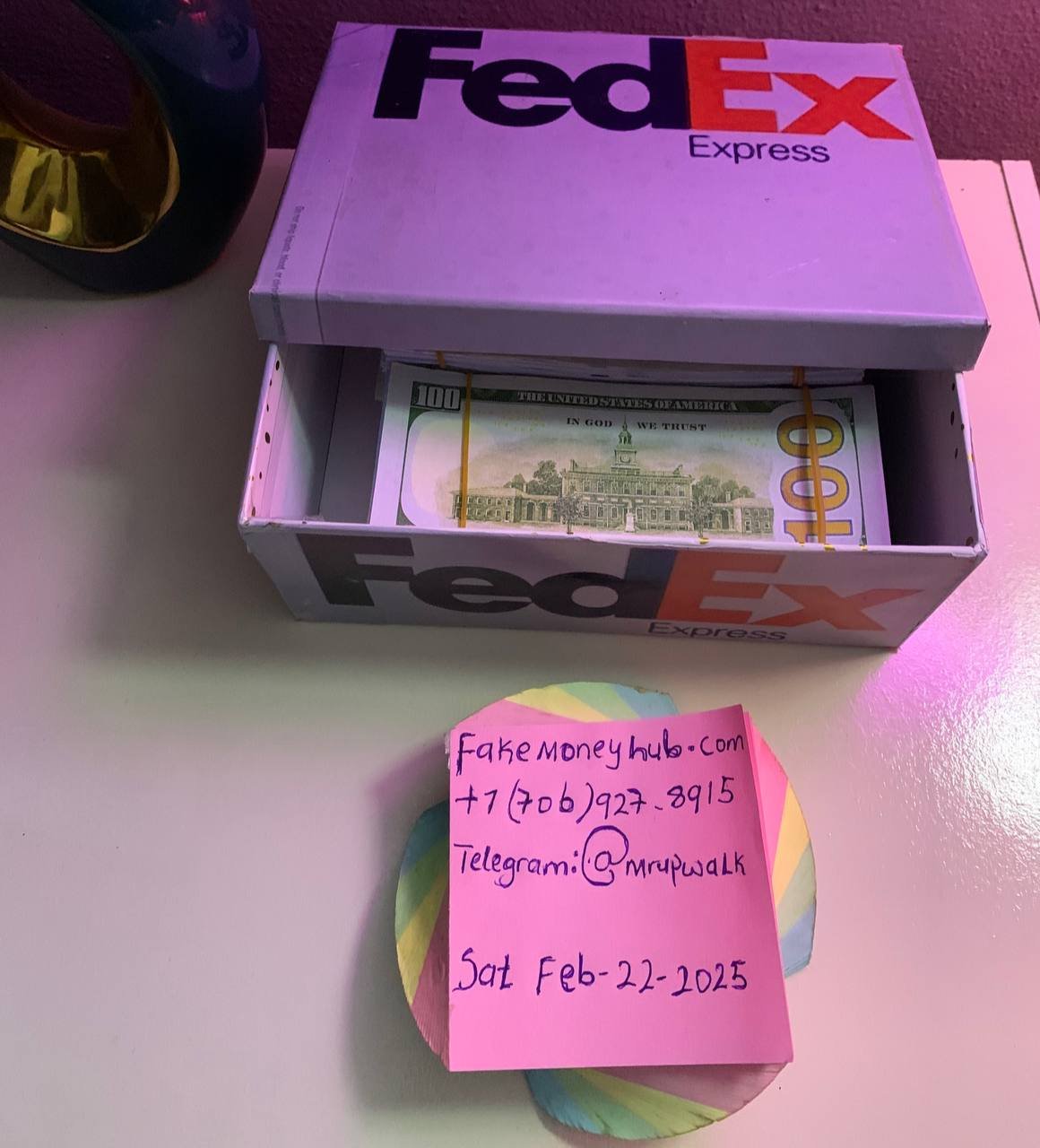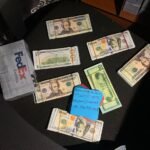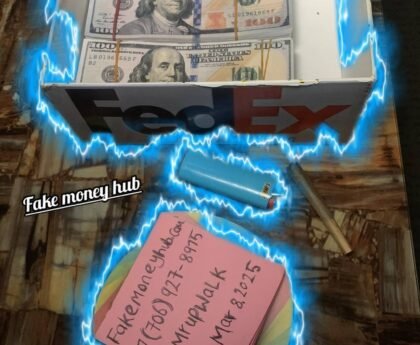Fake Twenty Dollar Bill | Fake Dollar Bill
Fake One Hundred Dollar Bill has plagued economies for centuries, undermining trust in financial systems and creating significant headaches for governments, businesses, and consumers.
While advances in technology have made currencies harder to replicate, counterfeiters remain relentless in their efforts to produce fake notes. Some countries are more affected than others, with certain regions witnessing a higher prevalence of counterfeit money circulating in their economies.
This blog will explore the countries with the highest rates of counterfeit money in circulation, examine why counterfeiting persists in these regions, and highlight efforts to tackle this global issue.
Understanding Counterfeit Money and Its Impact
Counterfeit money refers to the manufacturing or distribution of fake currency made to look like legitimate notes. Although it might seem like a “victimless” crime on the surface, it has widespread economic consequences:
- Erosion of trust in a nation’s financial system
- Reduced value of currency due to inflation caused by excess fake money
- Financial losses for businesses that unknowingly accept counterfeit notes
- Costs to taxpayers as governments spend millions to produce secure currency and combat counterfeiting practices.
Despite advancements in security features like holograms, microprinting, and watermarks, counterfeiters continue to exploit loopholes to target weaker points in certain economies.
Now that we’ve established the impact, let’s explore global hotspots for counterfeit money circulation.
1. United States
Why It’s a Target
Fake Hundred Dollar Bills is one of the most widely circulated currencies globally, making it an attractive target for counterfeiters. Criminal enterprises across the world often Counterfeit U.S. Dollars due to their high demand in international trade and everyday transactions.
Key Challenges
- International counterfeit rings in places like South America and Mexico actively print fake U.S. bills.
- Domestic issues also arise, with counterfeiters in the U.S. exploiting advanced printing technologies like inkjet printers.
Notable Efforts
The Secret Service, established in 1865 primarily to combat counterfeiting, remains at the forefront of anti-counterfeiting measures. The U.S. has also integrated complex security features like color-shifting ink and 3D security ribbons into its bills.
Interesting Fact
The Fake 20 Bill and Counterfeit 100 bills are the most commonly counterfeited denominations.
2. India
Why It’s a Target
India has faced increasing issues with counterfeit money, particularly with INR 500 and INR 2,000 denominations. The country’s vast population, high volume of cash transactions, and porous borders with neighboring countries contribute to the problem.
Key Challenges
- Counterfeit currency from external sources, particularly from Pakistan, infiltrates India’s economy.
- The use of counterfeit currency to fund illegal activities, such as terrorism, poses another significant challenge.
Notable Efforts
The Reserve Bank of India (RBI) has launched public awareness campaigns and enhanced the security features of its currency. Demonetization in 2016 also aimed (though somewhat controversially) to curb the circulation of counterfeit bills.
Interesting Fact
Between 2021 and 2023, seized counterfeit notes in India showed a stark increase, pointing to an ongoing battle despite efforts to contain it.
3. Nigeria
Why It’s a Target
Nigeria, Africa’s largest economy, has faced persistent counterfeit money problems due to its high dependency on cash transactions and a lack of public awareness about fake currency identification.
Key Challenges
- Limited access to digital banking solutions in rural areas, where people rely heavily on cash.
- Criminal organizations exploiting outdated printing technologies in certain parts of the country.
Notable Efforts
The Central Bank of Nigeria has incorporated holographic security threads and raised printing into the Naira to make counterfeiting more difficult. Additionally, newer e-payment systems are being promoted to reduce cash dependency.
Interesting Fact
Counterfeiters often target low-value notes in Nigeria, unlike other nations where higher-denomination bills are preferred.
4. European Union
Why It’s a Target
The Euro (€) is the second most traded currency globally, making it a lucrative target for counterfeiters. Some of the most affected countries include Italy, Spain, and Greece.
Key Challenges
- A single currency used across multiple nations creates a large network that is challenging to monitor.
- The proximity of affected countries to regions known for organized crime contributes to the problem.
Notable Efforts
The European Central Bank has implemented advanced technology, such as emerald number printing and tactile marks on Fake Euro Notes, to prevent counterfeiting. Collaborative efforts between law enforcement agencies across the EU have resulted in several major counterfeit syndicates being dismantled.
Interesting Fact
The €20 and €50 notes account for the majority of counterfeit currency detected in the EU.
Fake One Hundred Dollar Bill | Fake Euro Notes
5. Venezuela
Why It’s a Target
Venezuela’s severe economic instability and hyperinflation have made its currency, the Bolivar, highly susceptible to counterfeiting.
Key Challenges
- Devaluation of the Bolivar has resulted in weak enforcement of anti-counterfeiting laws.
- The crisis has led to a black market where Fake One Hundred Dollar Bill is traded openly.
Notable Efforts
The Venezuelan government has worked to introduce new higher-denomination notes with improved security features. However, the ongoing economic crisis undermines these measures.
Interesting Fact
Counterfeiting in Venezuela often coexists with the production of Fake U.S. Dollars within the country.
6. China
Why It’s a Target
China, being a hub of global trade and with a largely cash-based transactional system, is both a producer and target of Fake 100 Bill.
Key Challenges
- Technological resources allow counterfeiters to produce higher-quality fake Yuan notes.
- High volumes of transactions during festivals and shopping seasons lead to increased circulation of counterfeit bills.
Notable Efforts
The Chinese government has increased regulations on printing technology and introduced QR codes with advanced verification systems on Yuan notes.
Interesting Fact
During Chinese New Year, counterfeit money incidents see a sharp spike as large cash gifts are exchanged.
How Governments Combat Counterfeit Money
Governments around the world are ramping up their efforts to curb counterfeiting. Here are some of the most common strategies:
- Enhanced Currency Security: Complex designs, microprinting, and unique holograms make replication harder.
- Public Awareness Campaigns: Citizens are educated on how to identify counterfeit currency through visual cues.
- International Collaboration: Countries share resources and intelligence to dismantle transnational counterfeit rings.
- Digital Payment Solutions: Reducing dependence on cash helps limit counterfeit circulation.
- Heavy Penalties: Strict legal actions against counterfeiters deter criminals from engaging in such activities.
While these efforts have helped reduce counterfeiting to some extent, it remains a cat-and-mouse game, with counterfeiters constantly looking for new ways to exploit vulnerabilities.
The Global Picture
Counterfeit Currency isn’t just a financial crime; it’s a tool that fuels illegal activities, from money laundering to terrorism. By understanding the regions most affected and the reasons behind it, we can better appreciate the importance of anti-counterfeiting measures.
If you’re a finance professional or business owner, staying informed about counterfeit trends is critical. Whether you’re handling cash transactions or planning your move toward digital payments, vigilance is key.
Encourage your team to familiarize themselves with your local and international currency’s security features and report suspicious notes immediately. Together, we can all play a part in taking Fake One Hundred Dollar Bill out of circulation.




